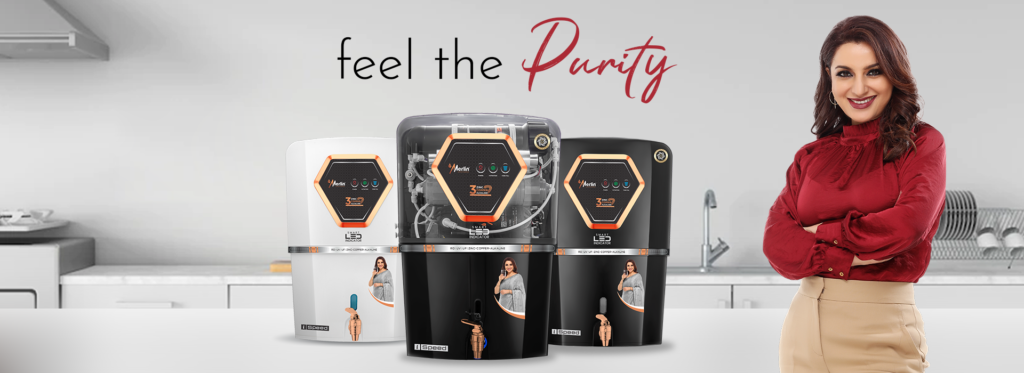Power of Copper-Filtered Water in Your Weight Loss Journey
Embarking on a weight loss journey requires a holistic approach that encompasses not only dietary changes but also lifestyle adjustments. In recent times, the significance of hydration in weight loss has gained considerable attention. One unique and ancient practice that has been rediscovered for its potential benefits is drinking water stored in copper vessels. In this article, we will explore the reasons why copper-filtered water is deemed effective for weight loss and how it can contribute to your overall well-being. Understanding the Copper-Water Connection: Copper, an essential trace mineral, plays a crucial role in various bodily functions. When water is stored in a copper vessel, it undergoes a process known as oligodynamic effect, where copper ions leach into the water, exhibiting antimicrobial properties. This process not only purifies the water but also infuses it with beneficial properties that can aid in weight loss. Boosting Metabolism with Copper: One of the key mechanisms through which copper-filtered water aids in weight loss is by boosting metabolism. Copper is involved in the synthesis of adenosine triphosphate (ATP), the energy currency of the body. Adequate copper levels support efficient energy production, which in turn enhances metabolism. A well-regulated metabolism is vital for burning calories and shedding excess weight. Regulation of Thyroid Function: The thyroid gland plays a pivotal role in regulating metabolism. Copper contributes to the production of thyroid hormones, including thyroxine (T4) and triiodothyronine (T3). These hormones are crucial for maintaining a healthy metabolic rate. Drinking water infused with copper can support thyroid function, ensuring that your metabolism operates optimally. Balancing pH Levels: Maintaining the body’s pH balance is essential for overall health, and copper can aid in achieving this equilibrium. An alkaline environment is believed to be less conducive to fat storage, and copper helps in maintaining a slightly alkaline pH. By promoting an alkaline environment, copper-filtered water may create an environment that is less favorable for the accumulation of excess fat. Reducing Inflammation: Chronic inflammation is often associated with weight gain and obesity. Copper possesses anti-inflammatory properties that can help reduce inflammation in the body. By mitigating inflammation, copper-filtered water may contribute to a healthier body composition and facilitate weight loss. Curbing Appetite: Staying hydrated is crucial for managing appetite, and copper-filtered water may offer an additional advantage. Some studies suggest that copper can help regulate appetite by influencing the secretion of hormones involved in hunger and satiety. Drinking water stored in copper vessels may help you feel fuller for longer, reducing the likelihood of overeating and supporting your weight loss goals. Detoxification Benefits: Copper is known for its detoxifying properties, aiding in the elimination of toxins from the body. Efficient detoxification is essential for weight loss, as it ensures that the body functions optimally. Copper-filtered water acts as a natural detoxifier, assisting in the removal of waste and harmful substances that may impede weight loss efforts. Improving Digestive Health: Digestive health is closely linked to weight management. Copper plays a role in the production of enzymes that facilitate digestion. By promoting a healthy digestive system, copper-filtered water can enhance nutrient absorption and contribute to overall well-being. Enhancing Blood Circulation: Proper blood circulation is crucial for the transportation of nutrients and oxygen throughout the body. Copper aids in the formation of red blood cells, promoting optimal circulation. Improved blood flow supports the efficiency of various bodily functions, including metabolism, which can contribute to effective weight loss. Tips for Incorporating Copper-Filtered Water into Your Routine: Invest in a Quality Copper Vessel: Ensure that the vessel you use to store water is made of high-quality copper to maximize the benefits. Avoid vessels with inner linings or coatings that may interfere with the leaching process. Time and Duration: Allow water to be stored in the copper vessel for at least 6-8 hours or overnight for optimal ionization. Consume the water first thing in the morning on an empty stomach for enhanced effectiveness. Moderation is Key: While copper-filtered water can be beneficial, moderation is crucial. Excessive intake of copper can lead to toxicity, so it’s essential to strike a balance. To Wrap Up Now Incorporating copper-filtered water into your weight loss journey can be a simple yet powerful strategy. The unique properties of copper contribute to metabolism, thyroid function, and overall well-being. However, it’s important to remember that water alone is not a magic solution for weight loss. Combine the benefits of copper-filtered water with a balanced diet, regular exercise, and a healthy lifestyle for optimal results. As you embark on your weight loss journey, let the ancient wisdom of copper-infused water be a supportive companion in your quest for a healthier and happier you. Choose Merlin a Leading Water Purifier offer best water filter with the goodness of zinc and copper. So visit now and get a healthy solution for your family.
Power of Copper-Filtered Water in Your Weight Loss Journey Read More »







